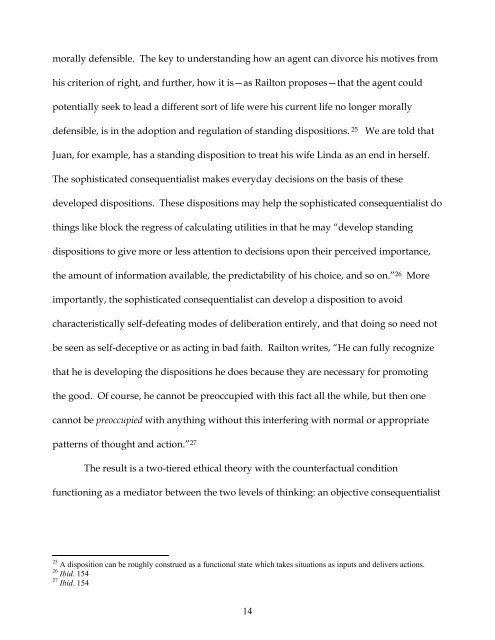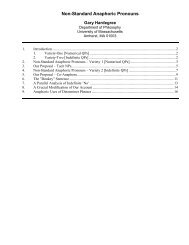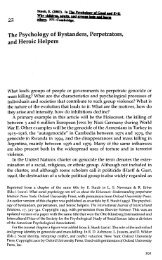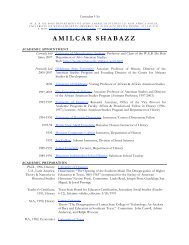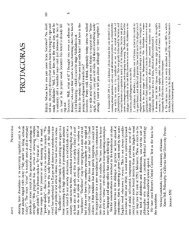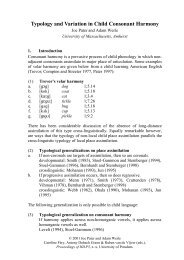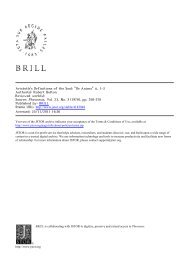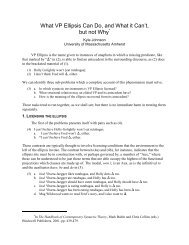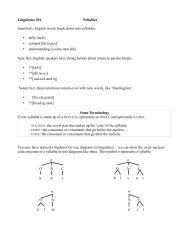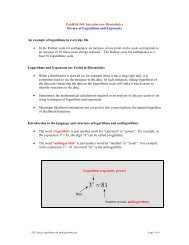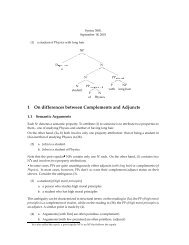1 Confessions of a Moral Schizophrenic* By Jayme Johnson I ...
1 Confessions of a Moral Schizophrenic* By Jayme Johnson I ...
1 Confessions of a Moral Schizophrenic* By Jayme Johnson I ...
Create successful ePaper yourself
Turn your PDF publications into a flip-book with our unique Google optimized e-Paper software.
morally defensible. The key to understanding how an agent can divorce his motives from<br />
his criterion <strong>of</strong> right, and further, how it is—as Railton proposes—that the agent could<br />
potentially seek to lead a different sort <strong>of</strong> life were his current life no longer morally<br />
defensible, is in the adoption and regulation <strong>of</strong> standing dispositions. 25 We are told that<br />
Juan, for example, has a standing disposition to treat his wife Linda as an end in herself.<br />
The sophisticated consequentialist makes everyday decisions on the basis <strong>of</strong> these<br />
developed dispositions. These dispositions may help the sophisticated consequentialist do<br />
things like block the regress <strong>of</strong> calculating utilities in that he may “develop standing<br />
dispositions to give more or less attention to decisions upon their perceived importance,<br />
the amount <strong>of</strong> information available, the predictability <strong>of</strong> his choice, and so on.” 26 More<br />
importantly, the sophisticated consequentialist can develop a disposition to avoid<br />
characteristically self-defeating modes <strong>of</strong> deliberation entirely, and that doing so need not<br />
be seen as self-deceptive or as acting in bad faith. Railton writes, “He can fully recognize<br />
that he is developing the dispositions he does because they are necessary for promoting<br />
the good. Of course, he cannot be preoccupied with this fact all the while, but then one<br />
cannot be preoccupied with anything without this interfering with normal or appropriate<br />
patterns <strong>of</strong> thought and action.” 27<br />
The result is a two-tiered ethical theory with the counterfactual condition<br />
functioning as a mediator between the two levels <strong>of</strong> thinking: an objective consequentialist<br />
25 A disposition can be roughly construed as a functional state which takes situations as inputs and delivers actions.<br />
26 Ibid. 154<br />
27 Ibid. 154<br />
14


